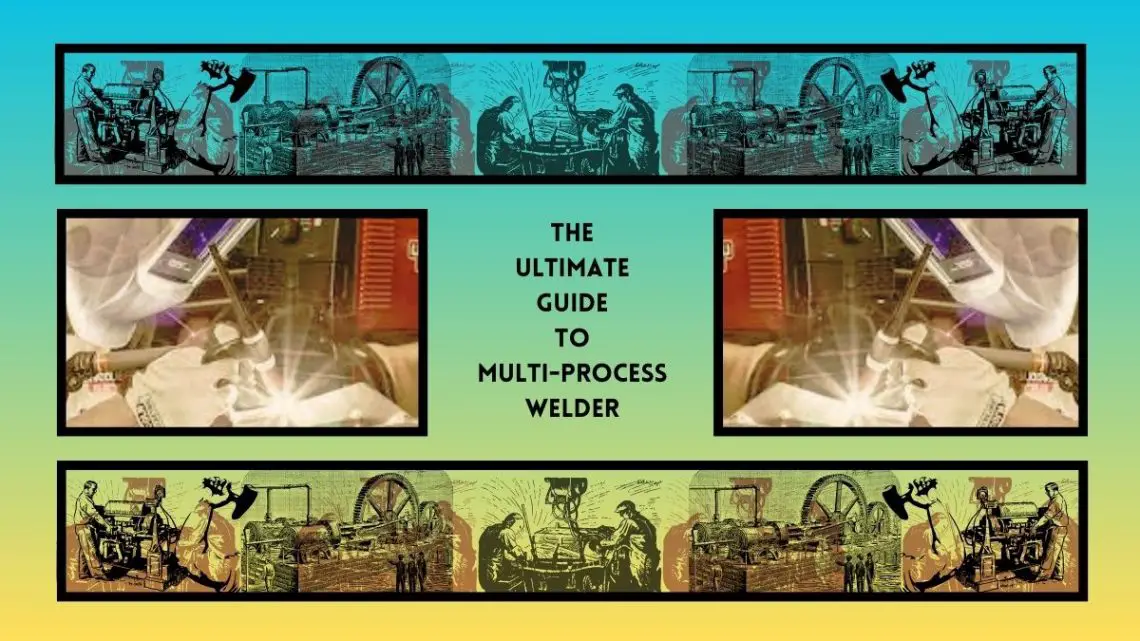
The Ultimate Guide to Multi Process Welder
A Multi Process Welder is versatile equipment that can perform multiple welding processes. It caters to TIG, MIG, Stick, and Flux-Cored welding techniques.
Multi-process welders provide a cost-effective solution for both professional and hobbyist welders seeking a single machine with a range of capabilities. With the ability to switch between different welding methods, these welders offer flexibility for working on various materials and projects without the need for multiple units.
This adaptability makes them ideal for workshops where space is at a premium and for job sites requiring different types of welds. Their ease of use and the capability to handle diverse tasks ensure they’re a popular choice for those engaging in metal fabrication, automotive repairs, and construction projects. Investing in a multi-process welder can enhance productivity by reducing setup time and simplifying the welding process across different applications.
Related Article: The Ultimate Welding Tools for Beginners
You may also read: Welding Parameters: Tips for Superior Joint Quality
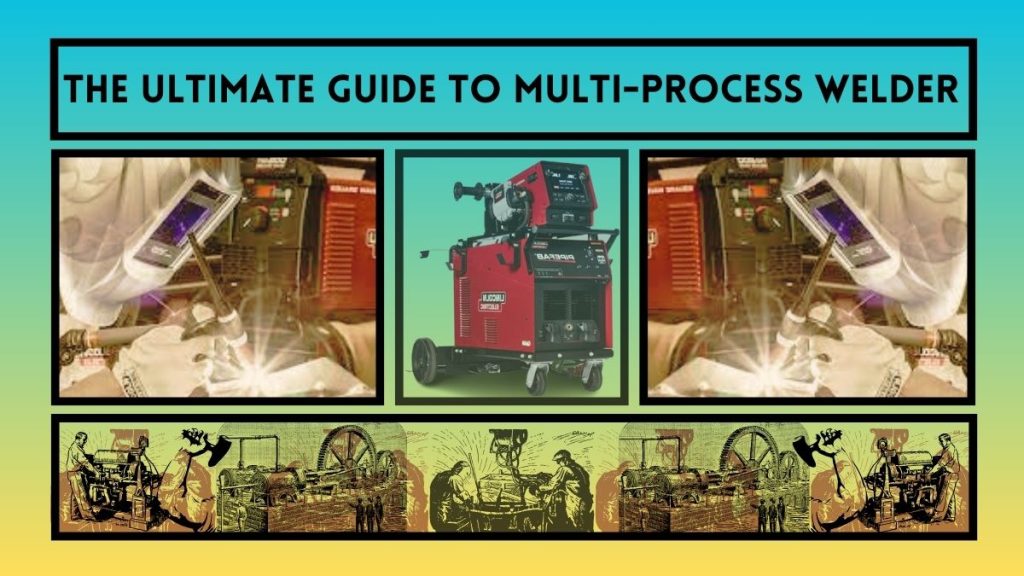
Related Article: Is Welding Hard? – The Ultimate Guide to Know about Welding
You may also read: How Do Auto-Darkening Welding Helmets Work? – A Complete Guide
The Evolution Of Welding Technology
The art of joining metals has come a long way. From ancient forge welding to today’s sophisticated techniques, welding technology has made leaps and bounds. Understanding this advancement is key to appreciating modern welding equipment, including multi process welders.
From Single Process To Multi Process Innovation
Transforming the industry, the shift from single to multi process welding machines marks a major leap. Modern welders now harness multiple techniques within one device. This integration caters to a variety of materials and project demands. Versatility is the hallmark of a multi process welder. Users enjoy the convenience and efficiency of switching between processes like MIG, TIG, and stick welding without changing machines.
How Technological Advancements Shaped Welding
Technological progress in welding cannot be overstated. Key advancements have ushered in sophisticated controls and improved power efficiency. With digital interfaces, welders fine-tune settings for precision. Inverter technology has also shrunk welders in size while increasing their capability.
- Precise control with digital technology
- Greater power efficiency through inverters
- Enhanced safety features for operator protection
These developments result in stronger welds, increased productivity, and safer work environments. As a result, the multi process welder stands as a testament to innovation in welding technology.
Related Article: Dekopro 110/220V mma Welder Review for Professionals

Credit: tikweld.com
Related Article: How To Choose A Welder: Expert Tips for Perfect Joining
Unveiling The Multi Process Welder
Imagine a tool that handles multiple welding tasks with ease. That’s the multi process welder. This versatile machine can tackle various welding jobs without the need for several different welders. Let’s explore this all-in-one welding solution.
Key Features And Capabilities
A multi process welder stands out because of its adaptability. Below are its key features:
- Versatile Use: Switch between MIG, TIG, and Stick welding.
- Portability: Compact design makes it easy to move.
- Power Efficiency: Uses less electricity, reduces costs.
- User Friendly: Simple controls, ideal for beginners and pros.
- Precise Control: Adjust settings for different materials.
Craftsmen can work on various projects with one machine. This versatility simplifies the workspace and saves money.
Comparing Single And Multi Process Units
Choosing between single and multi process units is crucial. Here’s a comparison:
| Feature | Single Process | Multi Process |
| Type of Welding | One specific method | Multiple methods |
| Flexibility | Limited to one application | Adapts to various jobs |
| Space Required | More for multiple units | Less for one unit |
| Cost | Higher for multiple machines | One-time investment |
Multi process welders shine with their adaptability and cost-effectiveness. They allow a seamless transition between processes, making them a top choice for welders who value efficiency and space.
Diving Into The Processes
A Multi Process Welder unites various welding processes in one machine. This versatility allows welders to tackle different tasks without changing equipment. Understanding these processes helps in selecting the right welder for the job. Let’s explore the capabilities of Multi Process Welders, starting with TIG, moving to MIG, and covering Stick welding and beyond.
TIG Welding Versatility
TIG Welding stands for Tungsten Inert Gas Welding. It’s known for precision and clean welds. TIG welding is ideal for thin materials like stainless steel and aluminum.
- Control: Easily adjust heat with a foot pedal.
- Quality: Achieve high-quality, spatter-free welds.
- Materials: Best for welding a wide range of metals.
MIG Mastery With Multi Process Welders
MIG Welding, or Metal Inert Gas Welding, is great for beginners and experts alike. It’s fast and efficient, perfect for a variety of projects.
- Speed: MIG is faster than TIG, suitable for production work.
- Ease of use: Simple to learn, with continuous wire feed.
- Versatility: Welds most metals and thicknesses.
Note: MIG is less portable compared to other methods due to the need for shielding gas.
Stick Welding And Beyond
Stick Welding, also known as Shielded Metal Arc Welding (SMAW), is robust and works well outdoors. It can weld dirty or rusty metals with ease.
- Adaptability: Great for repair work and construction.
- Durability: Equipment is tough and long-lasting.
- Accessibility: No need for a gas supply, enhancing portability.
Modern Multi Process Welders integrate these methods, ensuring welders are well-equipped for any task at hand.
Related Article: The 9 Best TIG Welders of 2024 for Welding Efficiently
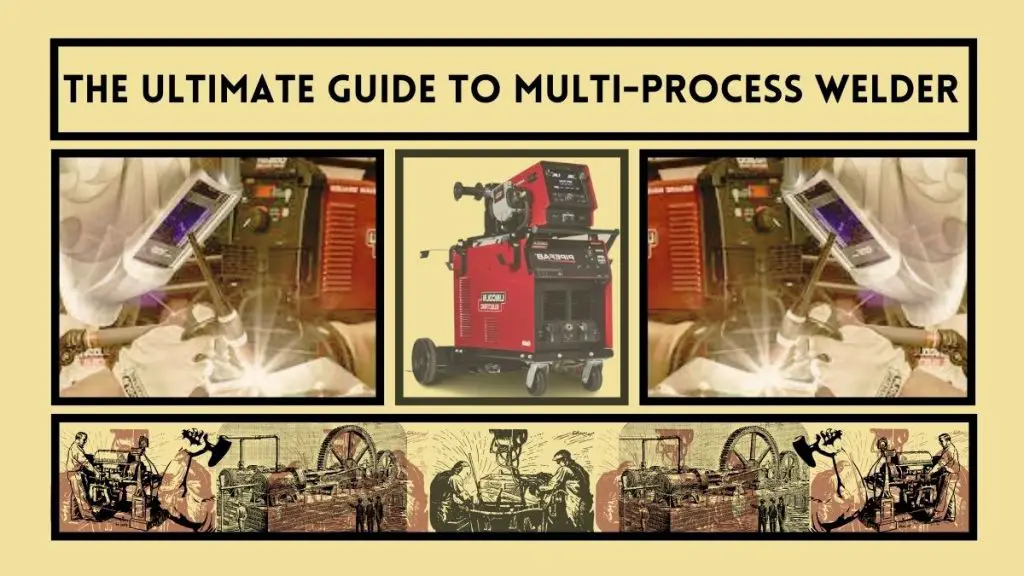
Related Article: Top 7 Best MIG Welders of 2024 for Precise Welding
Optimizing Your Workshop With A Multi Process Welder
Optimizing Your Workshop with a Multi Process Welder means embracing versatility and efficiency. Imagine a single machine that handles TIG, MIG, and Stick welding with ease. That’s the power-packed performance of a Multi Process Welder. Workshops, both big and small, can significantly benefit from its dynamic capabilities. Let’s explore how such a machine could be the ultimate game-changer for your project outcomes and space management.
Workspace Considerations
Adopting a Multi Process Welder transforms your workspace into a lean, mean fabrication station. But to make the most of it, consider these points:
- Size Matters: Ensure your shop has adequate space for the welder and safe operation.
- Tool Organization: Store accessories neatly for quick swaps between welding processes.
- Ventilation is Key: Good airflow keeps the workshop safe and prevents contamination.
Cost-benefit Analysis For Small Businesses And Hobbyists
The cost of equipment weighs heavily on small businesses and hobbyists alike. Here’s why a Multi Process Welder is worth it:
| Expense | Benefit |
| Initial Investment | Access to multiple welding processes in one machine |
| Space Savings | One device takes less room than multiple units |
| Power Efficiency | Only one welder drawing electricity at a given time |
| Maintenance | Simpler upkeep compared to several tools |
Improving Your Welding Skills Across Processes
Mastering various welding techniques is crucial for professionals looking to expand their expertise. With a multi process welder, welders can practice several welding processes using a single machine. This versatility allows for skills development in MIG, TIG, and Stick welding, among others. Let’s delve into how to effectively transition between these processes and ensure your equipment remains in top shape.
Best Practices For Transitioning Between Processes
- Understanding the Basics: Start with thorough knowledge of each process basics.
- Gradual Transition: Shift from familiar to unfamiliar techniques slowly.
- Reference Materials: Keep guides handy for quick parameter adjustments.
Implementing these practices facilitates a smoother transition and skill improvement.
Safety And Maintenance Tips For Longevity
| Safety Tips | Maintenance Tips |
| Wear appropriate protective gearMaintain a clean workspaceInspect equipment before use | Regularly clean and inspect welder partsFollow manufacturer’s guidelines for upkeepSchedule routine maintenance checks |
Following these tips ensures not only personal safety but also the longevity of your welding equipment.

Credit: www.linkedin.com
Frequently Asked Questions For Multi Process Welder
What Is A Multi Process Welder?
A multi process welder is a versatile machine that allows users to perform various welding processes such as MIG, TIG, Stick, and sometimes Flux-Core welding through one single device. It’s ideal for workshops needing multiple welding capabilities without owning multiple welders.
How Does A Multi Process Welder Benefit You?
With a multi process welder, you benefit from the convenience of switching between welding methods without needing separate machines. This not only saves space and cost but also enhances efficiency for projects requiring different welding techniques.
Who Should Consider Buying A Multi Process Welder?
Multi process welders are perfect for both professionals and hobbyists looking for flexibility in welding tasks. They are particularly suited for individuals with limited shop space and those who engage in varied projects with different welding requirements.
Can A Multi Process Welder Handle Heavy-duty Projects?
Many multi process welders are powerful enough to handle heavy-duty projects, depending on their maximum power output and duty cycle. Select a model with specifications that meet the demands of your specific heavy-duty welding tasks.
To know about the BEST MULTI PROCESS WELDERS 2024>>
Related Article: The Major Welding Defects You Should Know
Conclusion
Selecting the right multi-process welder enhances both efficiency and versatility in your metalworking projects. By understanding the specific features and capabilities you need, you’ll invest wisely. Remember to prioritize safety, compatibility, and the scope of applications. Make your welding seamless and your outcomes professional with the ideal multi-process welder choice.
Related Article: Top 9 Best Welding Helmets of 2024 for Welding Safely
You may also read: Top 20 Best Welding Tools of 2024 for Professional Welders


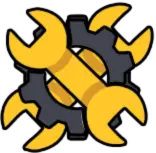
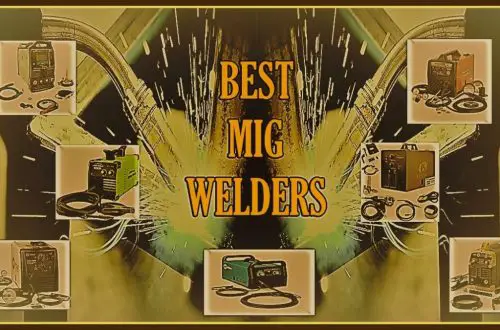
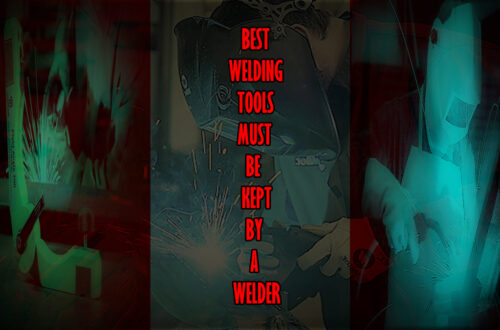
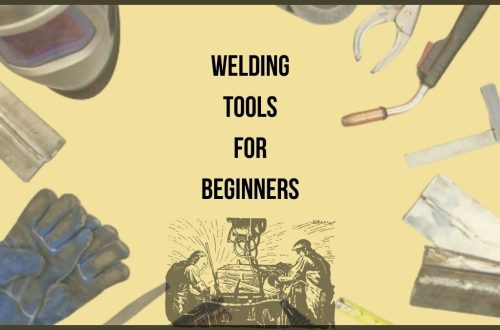
7 Comments
Pingback:
Pingback:
Pingback:
Pingback:
Pingback:
Pingback:
Pingback: